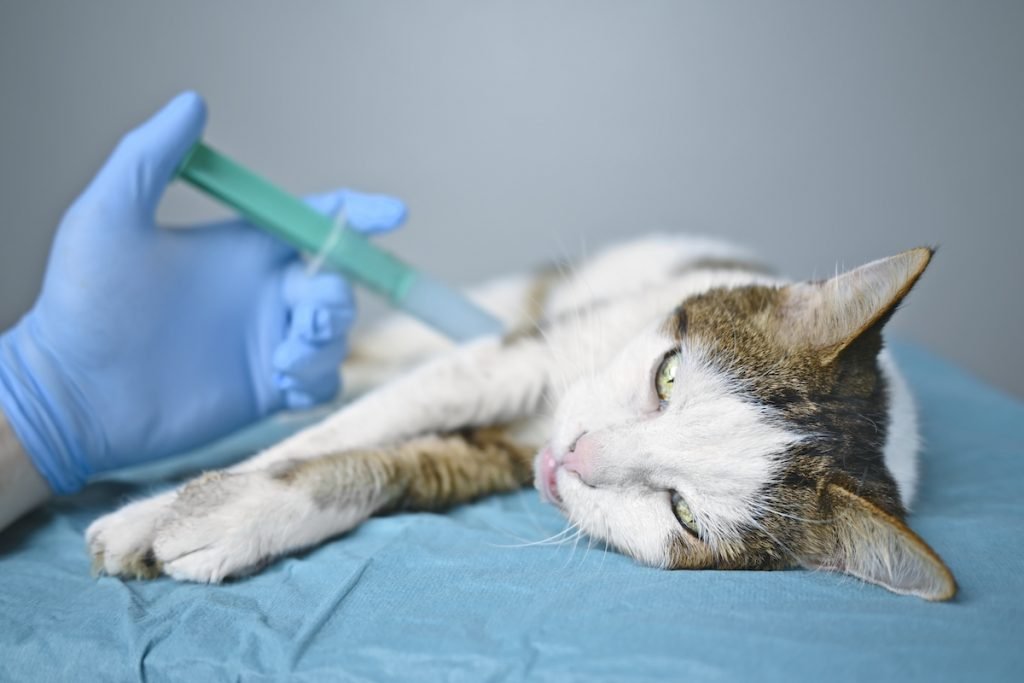Deciding when to euthanize a cat with seizures depends on seizure frequency, response to treatment, overall health, and quality of life. Compassionate euthanasia may be appropriate when suffering outweighs daily comfort and joy.
Deciding whether to euthanize a beloved cat suffering from seizures is one of the most difficult decisions any pet owner will face. Seizures may stem from treatable causes—or indicate progressive neurological decline. This guide helps you evaluate your cat’s quality of life, understand veterinary options, and make informed, compassionate decisions.
Understanding Seizures in Cats
Seizures occur due to abnormal electrical activity in the brain and can be caused by:
- Idiopathic epilepsy
- Brain tumors or inflammatory conditions
- Metabolic disorders (e.g., kidney or liver disease, low blood sugar)
- Toxins or infections
Symptoms may include uncontrolled jerking movements, loss of consciousness, twitching, drooling, and unprovoked aggression or disorientation.
Assessing Quality of Life: Key Considerations

The decision to euthanize a cat should center on comfort, not simply the presence of seizures. Vets often use a quality-of-life checklist to evaluate:
- Frequency, intensity, and duration of seizures
- Side effects or burden from medications
- Ability to eat, drink, move, and groom independently
- Presence of additional neurological symptoms such as blindness, disorientation, or head-pressing
- Balance between good days and bad days over time
If the number of bad days outweighs the good—or if medications cause sedation, fatigue, or loss of personality—euthanasia may be the most compassionate path.
Indicators to Consider Euthanasia When Seizures Are Involved
- Uncontrolled, frequent seizures: Discovering seizures multiple times a week or in clusters (multiple seizures back-to-back) may indicate that condition is no longer manageable.
- Status epilepticus: A seizure lasting over 5 minutes is a medical emergency and might cause irreversible brain damage. When treatment fails, euthanasia may be considered humane.
- Progressive neurological decline: If the underlying diagnosis is degenerative (e.g. brain tumor) and seizures worsen despite treatment, and the cat shows signs like disorientation or loss of sight, quality of life can be compromised.
- Medication-side effects: When anti-seizure drugs cause extreme sedation or weakness, reducing the cat’s enjoyment of life, euthanasia may be the kindest alternative.
- Frequent veterinary visits: Regular hospitalization, emergency medications, and poor recovery cycles may diminish comfort and quality of life enough to support euthanasia as an option.
Evaluating Your Cat’s Life: What to Ask
Use these questions as a guide for honest reflection:
- Is your cat still eating, drinking, and grooming independent of care?
- Can they walk, jump, and use the litter box without difficulty?
- Do they still show joy and engagement, or do they seem detached?
- Are you consistently managing seizures with minimal side effects?
- Have you noticed an overall decline in daily comfort?
If the answers shift from positive to negative, it’s time to discuss end-of-life considerations with your vet.
What You Can Do Before Making a Decision
🩺 Work with Your Veterinarian
Evaluate treatment options and expected outcomes. Responsible vets can adjust medication protocols or suggest palliative care to improve life quality.
📆 Track Symptoms & Quality of Life
Keep a “good days vs bad days” record. Note seizure frequency, behavior changes, energy levels, appetite, and responses to medication and care. This enhances your vet’s ability to advise.
🕊 Explore Hospice or Palliative Options
If euthanasia seems premature, hospice care (including at-home nursing support, modified diets, pain management) may improve well-being without invasive treatment.
The Euthanasia Process: What to Expect

When euthanasia is the kindest choice, here’s typically how it proceeds:
- Sedation first to ensure the cat is completely relaxed and unaware
- Final injection, such as pentobarbital, to gently stop the heart—allowing a peaceful, painless transition
- Option to choose location: in-clinic or in-home setting, according to your cat’s comfort and your preference.
Emotional Preparation & Grief Support
Euthanasia is a deeply personal decision. You’re not alone in feeling conflicted. Many caregivers find comfort in grief counseling, pet loss hotlines, or online support groups. Honoring your bond through memorial rituals, keepsakes, or a farewell moment can help ease the transition emotionally.
Summary Table: Seizure Severity vs. Quality of Life Indicators
| Seizure Pattern | Quality-of-Life Observations | Consider Euthanasia? |
| Sporadic seizures, well-managed | Eating, grooming, playing, alert, medication tolerated | No – continue care |
| Frequent, uncontrolled seizures | Lethargic, side-effect burden, hospital visits frequent | Yes – consider humane option |
| Status epilepticus or cluster seizures | Disoriented, loss of mobility, heavy medication | Yes – likely euthanasia |
| Progressive neurological decline | Withdrawal, no interaction, loss of function | Yes – compassionate choice |
| Severe medication side effects | Unresponsive, dull, sedation dominates daily life | Yes – if no improvement |
FAQs:
1. Can seizures in cats be treated without euthanasia?
Yes, many seizures are manageable with medications like phenobarbital or levetiracetam. Early intervention, monitoring, and veterinary support can improve your cat’s condition and delay or prevent the need for euthanasia.
2. How do I know if my cat’s seizures are causing suffering?
Watch for signs like confusion, loss of appetite, lethargy, frequent seizures, or medication side effects. If your cat no longer enjoys daily life, it may be a sign of significant suffering.
3. Should I consider a second opinion before euthanizing?
Absolutely. A second opinion from a veterinary neurologist or an experienced vet may offer more insights, especially if the cause of seizures isn’t fully diagnosed or new treatment options are available.
4. Can a cat die naturally from seizures without euthanasia?
Yes, in severe cases like status epilepticus, a cat may die naturally. However, this process can be painful and traumatic. Euthanasia ensures a peaceful, controlled, and painless alternative when quality of life has diminished.
5. Is it better to euthanize at home or in a clinic?
Many owners choose in-home euthanasia for a calm, familiar setting. However, clinics are equally humane. The choice depends on your cat’s condition, your emotional comfort, and available veterinary services.
Conclusion:
Deciding when to euthanize a cat with seizures is never easy, but your love and attentiveness guide the right choice. Consider seizure frequency, medication effects, daily function, and emotional presence. If your cat’s suffering outweighs joy and veterinary options are exhausted, euthanasia can offer a peaceful, dignified end. Consult your vet, trust your instincts, and remember this act—though heartbreaking—is one of compassion and deep love. You’re not alone, and support exists to help you navigate the grief with grace.
Related Post:
- Cat Food Canned – Ultimate Guide!
- Why Is My Dog Panting So Much At Night – Causes and Solutions for Canine Health!
- Why Is My Cat Not Drinking Water – Causes, Risks & Solutions!
